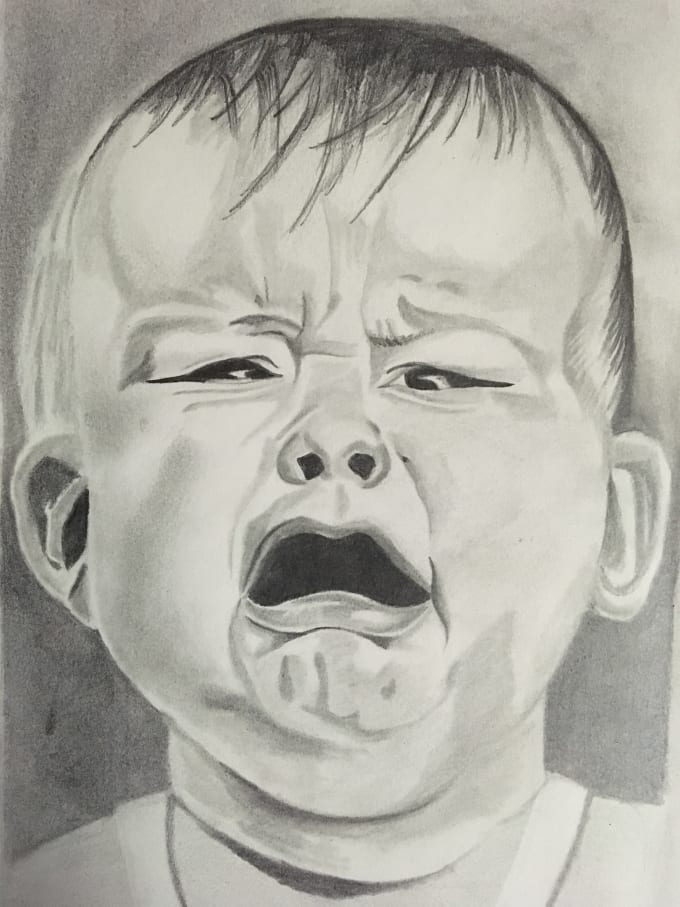Any Sketch Drawing
As a professional artist, I always like to explore different mediums to create amazing artwork.

One of my old and favorite hobbies is pencil sketching. Even though it may seem like a simple way of creating art, pencil sketching requires patience, skill, and a keen eye for detail.
Before you start with the pencil sketching, it is essential to have a clear idea in your mind of what you want to create. Once you have a clear vision, you can start with the sketching process. The first step involves making a rough sketch with light strokes using graphite pencils.
Once you have the basic sketch, it is time to add details and shading to bring the sketch to life. Adding shadows and highlights is an essential part of bringing depth and dimensionality to your sketch. By carefully observing the subject, you can create an accurate and realistic rendition of it.
One of the key aspects of pencil sketching is the ability to create different textures. By varying the pressure and direction of your pencil strokes, you can create patterns that mimic the natural texture of the subject. This skill can elevate your sketching from a simple drawing to a work of art.
If you're new to pencil sketching, there are a few tips you should keep in mind. Firstly, always start with light strokes and gradually build up the intensity. This will give you more control and prevent smudging. Secondly, try to use high-quality pencils as they give better results. And lastly, practice regularly to improve your skills and nurture your creativity.
Here are some additional tips for creating a great pencil sketch:
- Use a reference image to guide your sketching
- Experiment with different types of pencils and paper
- Be patient and take breaks if you feel fatigued
- Start with small sketches and gradually increase the complexity
- Always think about the composition and balance of your sketch
How to Create a Pencil Sketch
Creating a pencil sketch requires a few basic materials, including pencils, paper, eraser, and a reference image. Here are the steps to create a beautiful pencil sketch:
Step 1: Choose a Reference Image
The first step is to choose a reference image that you want to sketch. You can use a photograph or a physical object that you wish to draw.
Step 2: Sketch the Basic Shapes
Using a lighter pencil, such as an HB pencil, start by roughing out the basic shapes. You can use simple shapes like circles, squares, and triangles to construct the basic structure. This will help you to get a sense of the proportions and scale of the object.
Step 3: Add Details
Once you have the basic structure, you can start adding details using a sharper pencil. Add shading and texture with the pencil to create depth and dimensionality.
Step 4: Refine and Clean Up
As you continue to add details, you should refine and clean up the sketch. Use an eraser to eliminate unwanted lines and to highlight certain areas to create an illusion of depth.
Step 5: Finalize the Sketch
Once you are satisfied with the details and shading, you can finalize the sketch by going over the lines with a soft pencil. This will add depth and make the sketch look more polished.
Tips for Creating a Beautiful Pencil Sketch
Creating a beautiful pencil sketch requires patience, practice, and a keen eye for detail. Here are some additional tips to help you create stunning art:
Tip 1: Experiment with Different Pencils
Try different types of pencils to create varying tones and textures. For example, softer pencils like 4B and 6B are ideal for creating dark, rich tones, while harder pencils like 2H and 4H are perfect for light shading and outlining.
Tip 2: Vary the Pressure and Direction of Your Strokes
By varying the pressure and direction of your strokes, you can create a variety of textures and details. For example, using a cross-hatching technique can create shadows and highlights that add depth and dimensionality to your sketch.
Tip 3: Choose High-Quality Paper
The type of paper you use can greatly impact the quality of your sketch. Choose high-quality paper that can withstand erasing and smudging without tearing or wrinkling. This will give you a smooth surface to work on, and the final result will be clean and polished.
Tip 4: Don't Be Afraid to Make Mistakes
Remember, pencil sketching is a skill that requires practice and patience. Don't be afraid to make mistakes, as they are a natural part of the learning process. Use an eraser to correct any errors and continue to practice until you get the desired result.
Tip 5: Be Creative
Finally, don't be afraid to be creative with your pencil sketches. Use different angles, lighting conditions, and textures to create unique and captivating pieces of art. The key is to let your imagination run wild and have fun in the process!
With these tips and techniques, you can create beautiful pencil sketches that are sure to impress. Remember to practice regularly and have patience, and you'll be creating stunning artwork in no time. Whether you're a beginner or an experienced artist, pencil sketching is a great way to explore your creativity and express yourself through art.



Post a Comment for "Any Sketch Drawing"